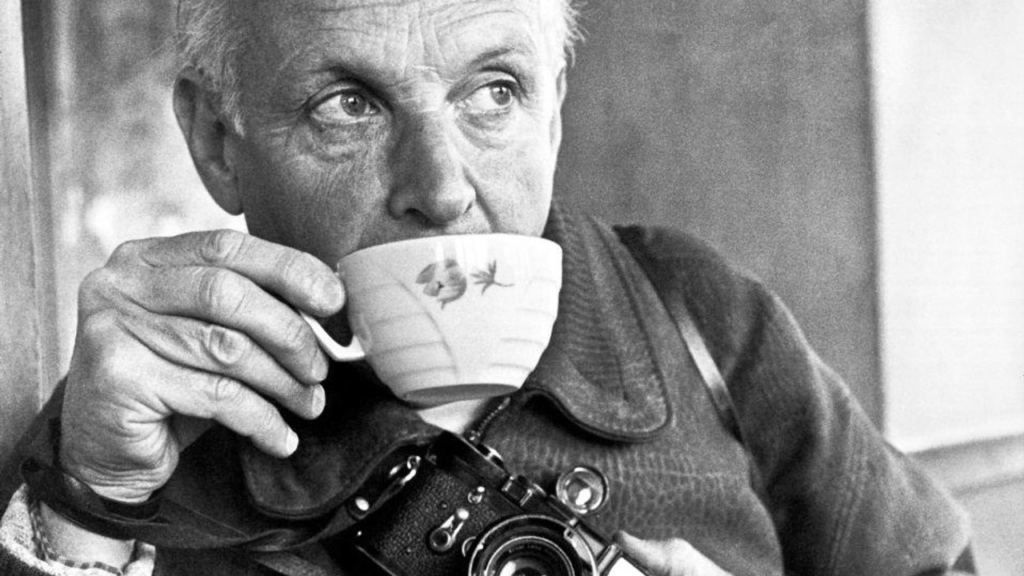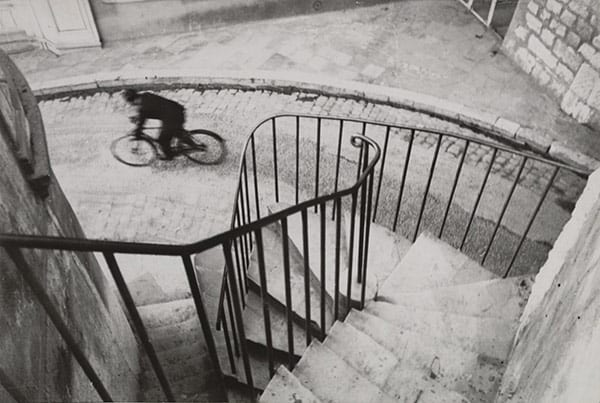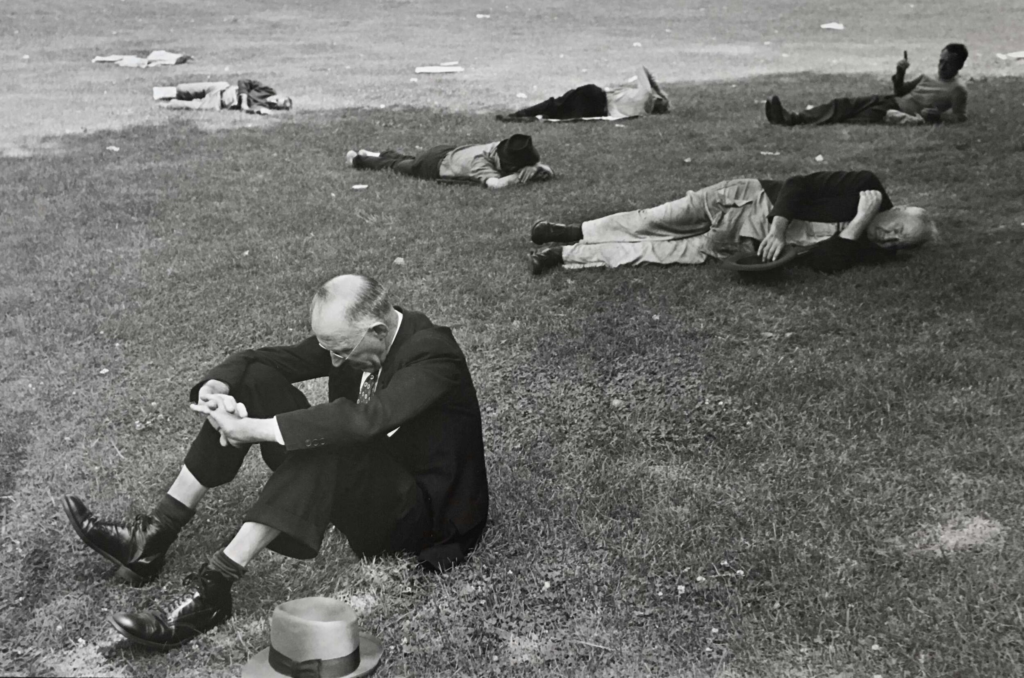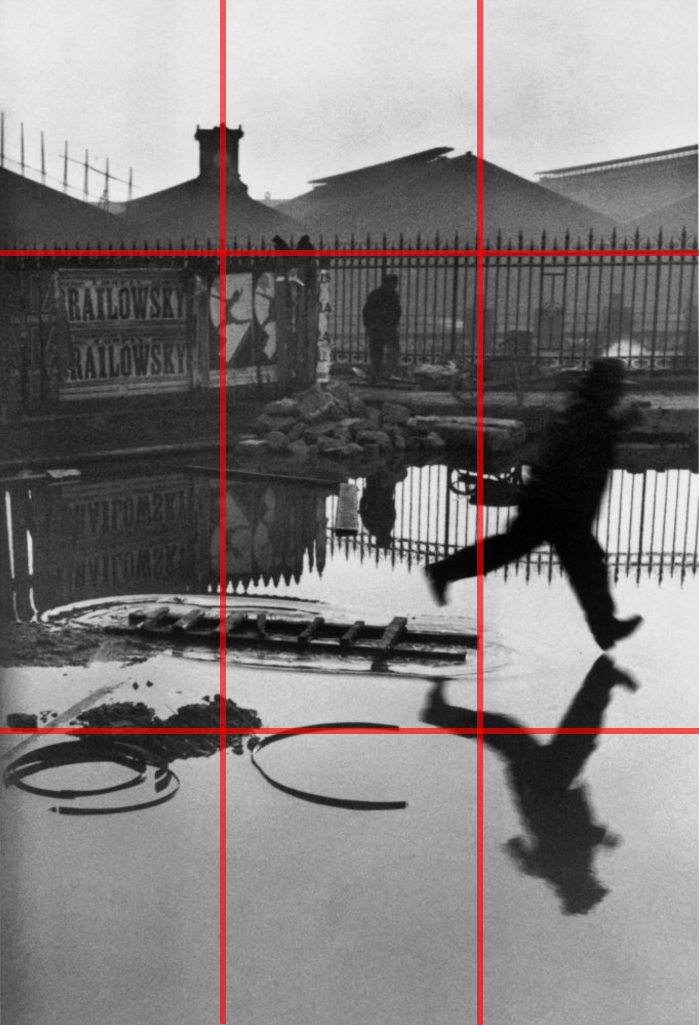Henri Cartier-Bresson

Henri Cartier-Bresson was a French artist and humanist photographer who was well known for his street photography. He was considered the master of candid photography and he viewed photography as capturing a decisive moment.
In his early life Cartier was more focused on the arts than photography, he studied art at just 5 years old in 1927 and proceeded to enter a private art school to pursue it further. In the 1930s Cartier acquired the Leica Range Finder camera that he would use for many years, due to the small size of the camera it made it very easy to take pictures anonymously in a crowd of people. He would use a 50mm lens to make his images more authentic and better quality, he also ended up painting his camera to make it even harder to spot in public so no one would know he was using it to take pictures. As his interest for photography grew he would then later give up art and do photography seriously and prioritised taking street photography of the public all over the world.
The Decisive Moment
The Decisive moment was a philosophy which was later made into a photobook made by Henri Cartier-Bresson which included some of his best images he created. A majority of the images he took utilised the street photography method and were quite candid as the people had no idea he was taking a photograph of them. This photobook was praised for the ability to capture the Essence of a moment, everything in the images he took were “real” as no one had any idea he was taking a picture so the photos were able to show the raw emotions of people and the natural moment they were experiencing at that time. This would then later motivate photographers to become more present and observant which can help to create more powerful and meaningful images.

Why is a camera an extension of the eye?
The camera is seen as an extension of the eye as it can often capture details you wouldn’t typically notice at a first glance. Taking a picture with a camera is like freezing time and everything captured in the photograph is stuck in place which can allow for certain details or interactions that took place within the photograph to be seen and observed in order to take in a better understanding of the image.

What is the physical pleasure of making photographs?
By making photographs you may feel a sense of ambition, you may want to capture certain details or use your photographs in a certain manner to show your views and interests to others around you. This sense of ambition may even fuel you to make more images especially if you feel that the photographs that you have captured is up to a very good standard or is of very good quality.

How can photography be likened to hunting?
Photography has similar attributes to hunting, Like hunting photographers have to find a place they want to take photographs at but they also have to consider what they want to capture in the frame, which angle or zoom they want to use and what they want the main focus point of the image to be. You have to be precise with photography at times, especially if your trying to photograph something specific to ensure that the image you take comes out the way that you want it.

Cartier-Bresson’s The Decisive Moment Image Analysis

With this image we can see various amounts of shapes such as the curved lines on the floor, the ladder with the planks on top, the ripples created by the subject and finally the fence rail and its thorn pattern. This image also uses a Composition method which is the rule of thirds, the subject falls on the far right of the image which takes up a square on the rule of thirds grid. The horizontal lines of the railings extending to the water reflection and the ladders horizontal lines are lined up perfectly to highlight the main focus point of the image which is the person jumping. We can also see the shadows casted perfectly and clearly on the water which add more detail to the image. The tonal range of the image is quite dark and lacks really light colours however it is still used strongly especially with the shadows and this is done to draw more attention towards areas in the photo which contain lots textures and highlights. These features draw you in to analyse the image more in depth.
Cartier would also appear to use a smaller aperture for a sharper focus and a quick shutter speed as there was no motion blur present in the image. He also takes advantage of the natural sunlight for his images, even using strong natural light which most photographers dislike due to issues like glare. However Cartier would use this for his advantage as this light would cast strong shadows and highlight many areas of the images. This photo in particular was one of Cartier’s best photos which captures someone who was mid jump in the air freezing him in time within the photo. This photo ended up changing the scene of street photography and candid photography too and it helped show photographers the beauty in the ordinary and what type of images you can capture within everyday life.
